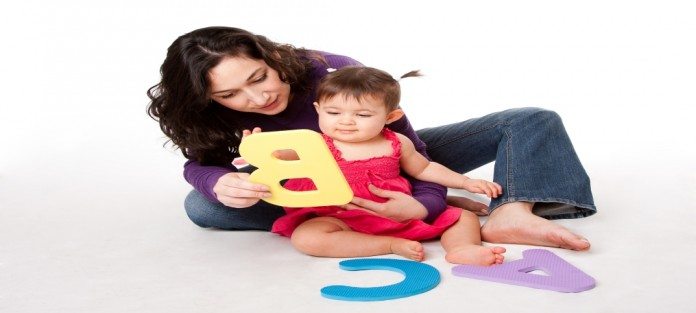Baby reaction time is slower than that of adults, however. Listening to her means that you may need to slow down and wait for her communication. If you can’t understand everything your baby “says,” don’t worry. No parent can understand every cry and coo their baby makes.
However, two things happen when you listen attentively and try to figure out your baby’s message. First, your baby has the experience of someone being interested in her ideas and feelings. Secondly, through listening over time and trial and error, you eventually do figure out most of children’s cues.
Here are some other things you can do to support your child’s language development:
1Respond to your baby’s cries.
Babies also learn about communication through crying. In the first year, crying is a central part of their communication system. When we respond to their cries, our babies learn that they will be listened to and that the world is a safe place where their needs will be met.
2Have “conversations” with your baby.
Young babies begin the skills of conversing by “taking turns.” They coo, look at you and wait. You coo and they coo back. In that simple interaction, they practice the structure of conversation and they learn that they will be responded to when they reach out to communicate.
3Talk naturally with your baby throughout your time with her.
Babies learn receptive language skills long before they learn expressive ones. Your daughter will understand what you are saying to her well before she is able to speak many words. When babies grow up in a language- rich environment, they naturally learn to speak. When you regularly talk to your daughter and listen to her, she will readily learn language. Modeling language is your best teaching tool. Babies and children don’t have to be “made” to speak correctly. When you model correct language, they will gradually learn proper grammar.
4Extend her language and describe what you see her doing.
This is something parents instinctively do with children. When your baby reaches for your nose, cooing, you can say, “That’s my nose. Are you going to grab it with your little hand?” When she turns toward the sound of the door opening, you can say, “You heard the door opening. Is that your sister coming in?” When the cat approaches and she starts gurgling and kicking her feet, you can say, “Ohhh, you see Tiger coming. You look excited to see your fuzzy cat,” or “Hi Tiger cat. Lisa is excited to see you coming.
5Read books.
There are wonderful baby books available. Look for books with photos or aesthetically-pleasing pictures. Children don’t need cartoons as their only pictures. Also, look for books with rich, varied or poetic language. Some babies will lie on their backs with you on the floor looking up at a book for several minutes at a time. Others will wiggle and squirm. There is no magic age to begin reading to children. It should be as soon as they can enjoy it. Try it periodically to see if your baby is interested.



